Cultural Resources Protection Program
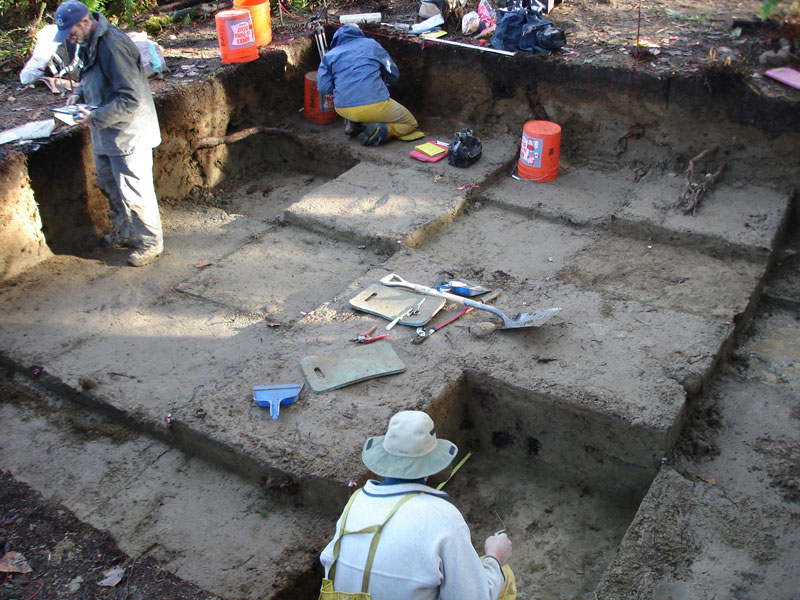
Large block excavation of a prehistoric archaeological site near Novelty Hill Road.
Digging into the past
Whenever a backhoe chomps into the ground somewhere in King County, there’s a possibility it could unearth remnants of the past–perhaps a prehistoric stone pestle, a Native American basket-making tool, or the hearth of a 19th-century cabin.
Road Services project engineers want to know what history might be hidden at a road or bridge construction site before their heavy equipment goes to work. Discoveries made after work is underway could result in damaged artifacts or costly delays while authorities decide how–or whether–the project can proceed.
That's why the division created its award-winning Cultural Resources Protection Program. The division compiled a comprehensive database about known and suspected artifacts in King County, and uses it to investigate every project site as part of a thorough cultural resources protection process. Road Services employs an archaeologist–a rarity in county government–to manage the program.
Data collection took five years
Using a grant from the Federal Highways Administration, Road Services hired an archaeologist to create the cultural resources database–a process that took five years. The data was drawn from a range of sources, such as old land surveys showing where cabins and roads were located in the 1800s, ethnographers’ notes of interviews conducted with Native Americans in the first half of the 20th century, the Burke Museum’s records of sites where citizens have found artifacts, and the state’s registry of archaeological sites and historic buildings. This unique compilation of data was overlaid on a GIS map. The resulting system allows a researcher to locate a site on the map and find all the data known about it, in one place.
Long before construction starts - research
When Road Services starts planning a construction project, staff archaeologist Tom Minichillo searches the database for information about the site’s cultural history. Minichillo says the system is a huge time-saver. Without it he would have to travel to Olympia, the UW, and elsewhere to examine separate records.
If his data search suggests the site might contain artifacts, Minichillo conducts an archaeological survey– which usually means he or a contract archaeologist goes out there and digs. If artifacts are found, and further study determines that the site is culturally significant, the Road Services Division works with state, federal and tribal authorities to agree on a protection or mitigation plan long before construction begins.
Minichillo says Road Services managers have steadfastly supported this process, even though it can put a wrinkle into a construction project. “No one here is unhappy when you find things during planning,” he said. “The bad thing is when you find something after you’ve given someone a contract and heavy equipment is on-site. This process is like an insurance policy.”
Cultural Resources Protection Program honored
The Road Services Division’s Cultural Resources Protection Program received a 2007 Achievement Award from the National Association of Counties (NACo). The award was presented at NACo’s Annual Conference in Richmond, Virginia, in July 2008. The program also was selected as ”Best in Category” for the Arts and Historic Preservation category–one of only 14 such awards conferred nationwide.
Visit the Historic and Scenic Corridors Project.
Photos
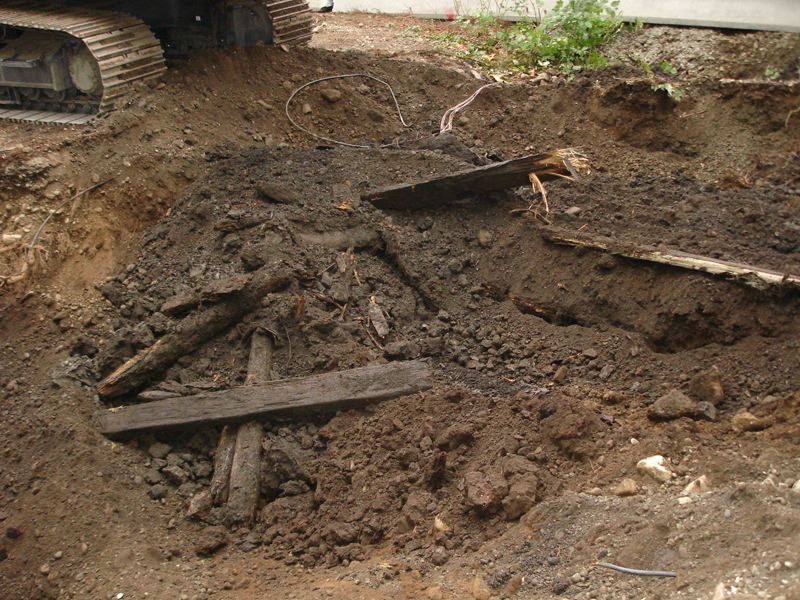
A section of log-paved, or "corduroy" road uncovered during a repair of Courtney Road, near Kanaskat.
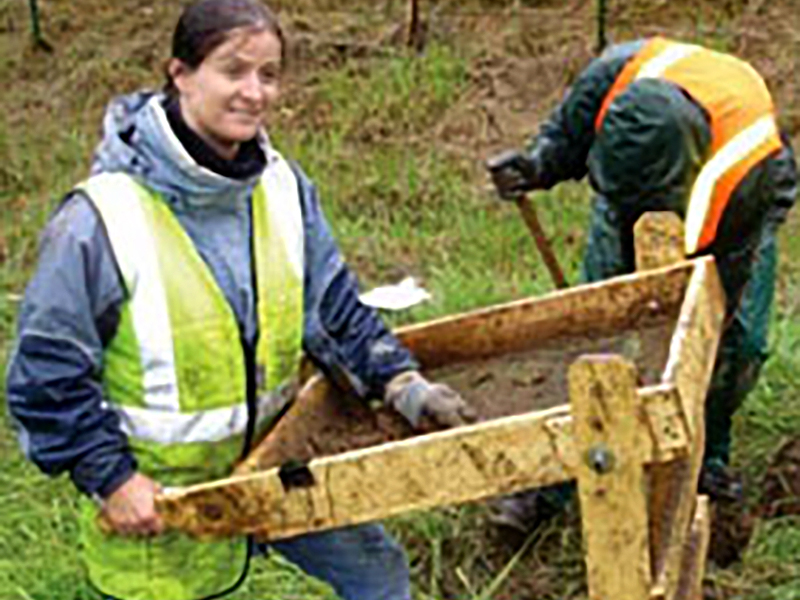
Archaeology consultants do an archaeological survey for the Novelty Hill Road project.
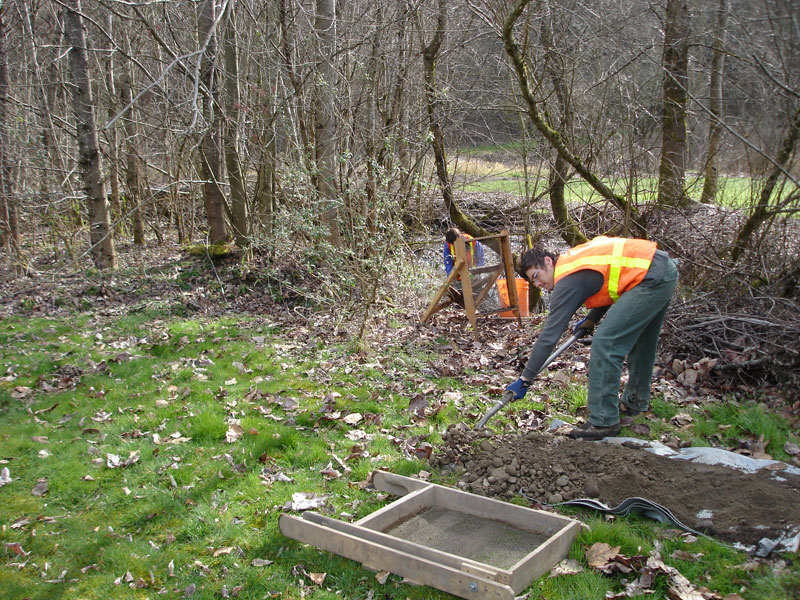
Archaeologists looking for buried historic features on the Mary Olson Farm.
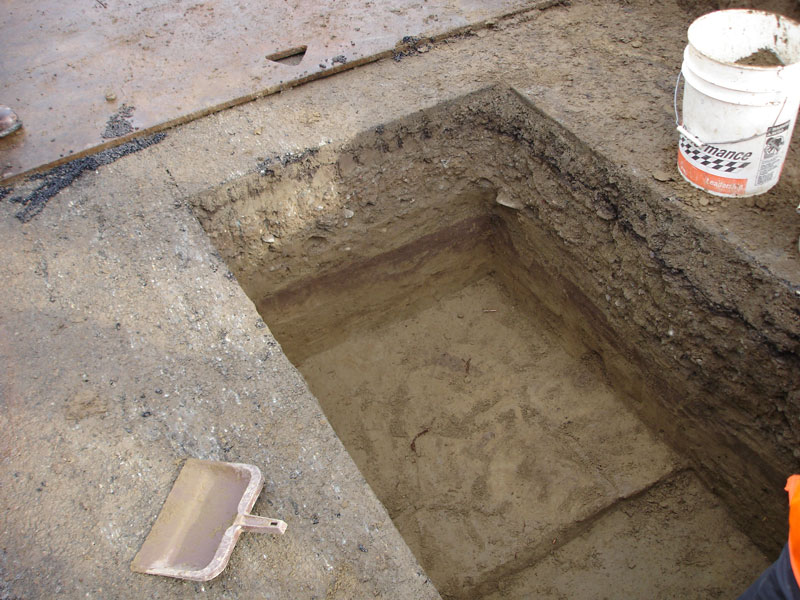
Prehistoric archaeological site (darker layer) under a road near Carnation.
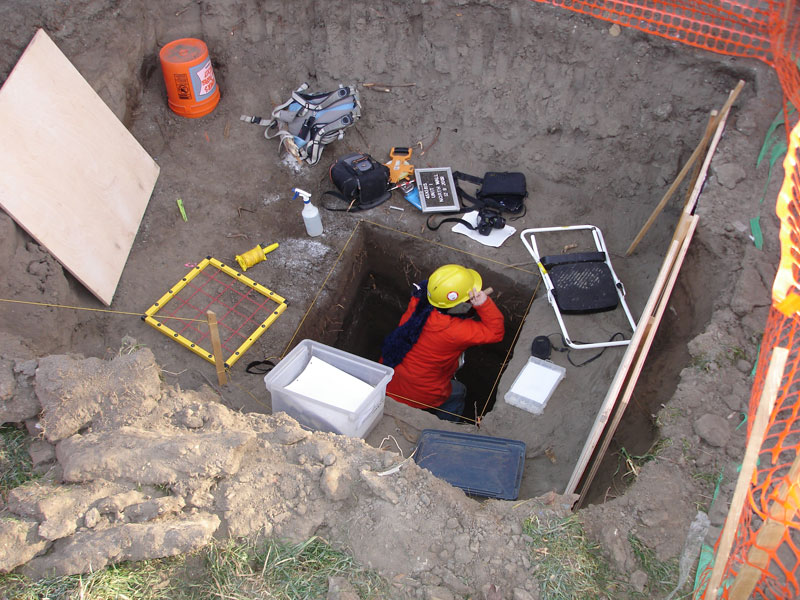
An archaeologist recording the stratigraphy of a prehistoric shell midden (white layer) near the South Park Bridge.

 Translate
Translate